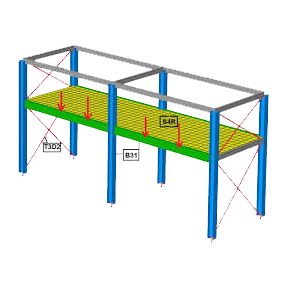fea

The finite element method (FEM) is a numerical method for solving problems of engineering and mathematical physics. Typical problem areas of interest include structural analysis, heat transfer, fluid flow, mass transport, and electromagnetic potential.
Here are 38 public repositories matching this topic...
CalculiX examples by Prof. Martin Kraska from Brandenburg University of Applied Sciences. Excellent starting point to master parametric modelling with CGX and CCX.
-
Updated
Apr 28, 2023 - Python
🔍 finite element analysis for continuum mechanics of solid bodies
-
Updated
Nov 18, 2024 - Python
EasyFEA is a user-friendly Python library that simplifies finite element analysis.
-
Updated
Nov 9, 2024 - Python
A library for creating and running 3D FEA simulations using the opensource Calculix FEA Package.
-
Updated
Nov 6, 2024 - Python
Material Definition with Automatic Differentiation
-
Updated
Jun 18, 2024 - Python
How to build the MPI Version of Code Aster 15.4 inside the Singularity Container of Salome-Meca 2021
-
Updated
Mar 1, 2023 - Python
Scientific Application Framework for Python [Prototype]
-
Updated
Apr 20, 2022 - Python
Constitutive hyperelastic material formulations for FElupe.
-
Updated
May 1, 2024 - Python
Python scripts for reading NASTRAN BDF Files
-
Updated
Aug 17, 2023 - Python
Finite Element Methods (FEmethods) can be used to calculate the shear, moment and deflection diagrams for beams. FEmethods can solve both statically determinant and statically indeterminate beams.
-
Updated
Dec 26, 2022 - Python
Example scripts for the Python scripting API of the SimVascular FSI simulation tool wrote during Summer 2019 and Summer 2020 internships @ Stanford CBCL.
-
Updated
Aug 29, 2020 - Python
Converter for calculix binary frd files to vtu
-
Updated
Nov 4, 2024 - Python
- Followers
- 85 followers
- Wikipedia
- Wikipedia